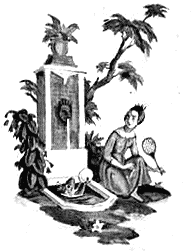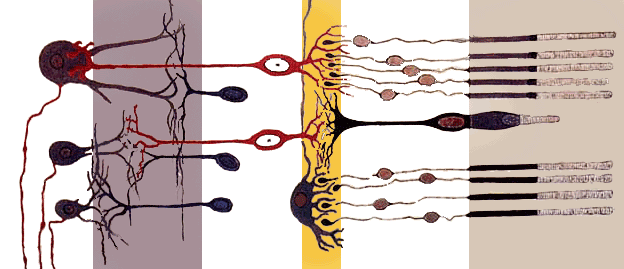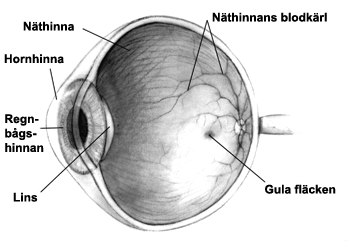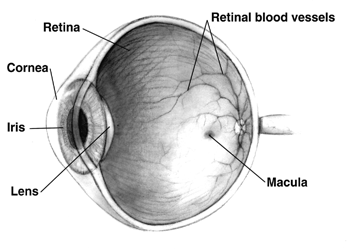http://en.wikipedia.org/wiki/Amygdala
In complex vertebrates, including humans, the amygdalae perform primary
roles in the formation and storage of memories associated with emotional
events. Research indicates that, during
fear conditioning,
sensory stimuli reach the basolateral complexes of the amygdalae,
particularly the lateral nuclei, where they form associations with
memories of the stimuli. The association between stimuli and the
aversive events they predict may be mediated by
long-term potentiation, a sustained enhancement of signalling between affected neurons.
More emotionally-arousing information increases amygdalar activity, and
that activity correlates with retention. Amygdala neurons show various
types of
oscillation during emotional arousal, such as
theta activity. These synchronized neuronal events could promote
synaptic plasticity
(which is involved in memory retention) by increasing interactions
between neocortical storage sites and temporal lobe structures involved
in
declarative memory.
A 2003 study found that adult and adolescent bipolar patients tended to
have considerably smaller amygdala volumes and somewhat smaller
hippocampal volumes.
Many studies have focused on the connections between the amygdala and
autism.
Individuals with larger amygdalae had larger and more complex social
networks. They were also better able to make accurate social judgments
about other persons' faces.
It is hypothesized that larger amygdalae allow for greater emotional
intelligence, enabling greater societal integration and cooperation with
others.
The right amygdala's role in fear and anxiety is well known. In one
study,electrical stimulations of the right amygdala induced negative
emotions, especially fear and sadness. In contrast, stimulation of the
left amygdala was able to induce either pleasant (happiness) or unpleasant (fear, anxiety, sadness) emotions
. Other evidence suggests the left amygdala plays a role in the brain's reward system.
http://en.wikipedia.org/wiki/Hippocampus
The causes of schizophrenia
are not at all well understood, but numerous abnormalities of brain
structure have been reported. The most thoroughly investigated
alterations involve the cerebral cortex, but effects on the hippocampus
have also been described. Many reports have found reductions in the size
of the hippocampus in schizophrenic subjects.
The changes probably result from altered development rather than tissue
damage, and show up even in subjects who have never been medicated.
Several lines of evidence implicate changes in synaptic organization and
connectivity.
It is unclear whether hippocampal alterations play any role in causing
the psychotic symptoms that are the most important feature of
schizophrenia. Anthony Grace and his co-workers have suggested, on the
basis of experimental work using animals, that hippocampal dysfunction
might produce an alteration of dopamine release in the
basal ganglia, thereby indirectly affecting the integration of information in the
prefrontal cortex.
Others have suggested that hippocampal dysfunction might account for
disturbances in long term memory frequently observed in people with
schizophrenia.
The hippocampus has a generally similar appearance across the range of mammal species, from
monotremes such as the
echidna to
primates such as humans.
The hippocampal-size-to-body-size ratio broadly increases, being about
twice as large for primates as for the echidna. It does not, however,
increase at anywhere close to the rate of the
neocortex-to-body-size
ratio. Therefore, the hippocampus takes up a much larger fraction of
the cortical mantle in rodents than in primates. In adult humans, the
volume of the hippocampus on each side of the brain is about 3–3.5 cm
3, as compared to 320–420 cm
3 for the volume of the neocortex.
http://en.wikipedia.org/wiki/Human_brain
Estimates for the number of
neurons (nerve cells) in the human brain range from 80 to 120 billion.
Most of the expansion comes from the
cerebral cortex, especially the
frontal lobes, which are associated with
executive functions
such as self-control, planning, reasoning, and abstract thought. The
portion of the cerebral cortex devoted to vision is also greatly
enlarged in human beings, and several cortical areas play specifiThe dominant feature of the human brain is
corticalization. The
cerebral cortex in humans is so large that it overshadows every other
part of the brain. A few subcortical structures show alterations
reflecting this trend.c roles
in language, a skill that is unique to humans.
Although there are enough variations in the shape and placement of
gyri and
sulci
(cortical folds) to make every brain unique, most human brains show
sufficiently consistent patterns of folding that allow them to be named.
Researchers who study the functions of the cortex divide it into three
functional categories of regions, or areas. One consists of the primary
sensory areas, which receive signals from the
sensory nerves and tracts by way of relay nuclei in the
thalamus. Primary sensory areas include the visual area of the
occipital lobe, the auditory area in parts of the
temporal lobe and
insular cortex, and the somatosensory area in the
parietal lobe.
A second category is the primary motor area, which sends axons down to
motor neurons in the brainstem and spinal cord. This area occupies the
rear portion of the frontal lobe, directly in front of the somatosensory
area. The third category consists of the remaining parts of the cortex,
which are called the
association areas.
These areas receive input from the sensory areas and lower parts of the
brain and are involved in the complex process that we call perception,
thought, and decision making.
Understanding the relationship between the brain and the mind is a great challenge.
[19]
It is very difficult to imagine how mental entities such as thoughts
and emotions could be implemented by physical entities such as neurons
and synapses, or by any other type of mechanism. The difficulty was
expressed by
Gottfried Leibniz in an analogy known as
Leibniz's Mill:
One is obliged to admit that perception and what depends upon it is
inexplicable on mechanical principles, that is, by figures and motions.
In imagining that there is a machine whose construction would enable it
to think, to sense, and to have perception, one could conceive it
enlarged while retaining the same proportions, so that one could enter
into it, just like into a windmill. Supposing this, one should, when
visiting within it, find only parts pushing one another, and never
anything by which to explain a perception.
— Leibniz,
Monadology
Incredulity about the possibility of a mechanistic explanation of thought drove
René Descartes, and most of humankind along with him, to
dualism: the belief that the mind exists independently of the brain.
There has always, however been a strong argument in the opposite
direction. There is overwhelming evidence that physical manipulations of
the brain, for example by drugs, can affect the mind in potent and
intimate ways
.
To put it crudely: if a person gets knocked on the head, that person's
mind goes away. The large body of empirical evidence for a close
relationship between brain activity and mind activity has led the great
majority of neuroscientists to be materialists: people who believe that
mental phenomena are ultimately reducible to physical phenomena.
http://en.wikipedia.org/wiki/Heart
The human
embryonic heart begins beating at around 22 days after conception.
http://en.wikipedia.org/wiki/Human_heart









































